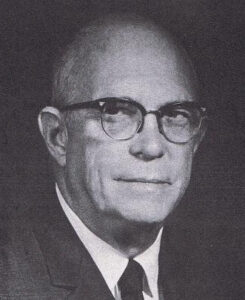DISC™
Communication Training
Communication and Behavioral Style, Assessments, Coaching and Employee Training
Worried that important communication is falling through the cracks in your organization or team? Does it often seem like those on your team are speaking a foreign language that you just don’t understand?
found that more than half (57%) put soft skills over hard skills when it comes to what they need their employees to develop.
The top four soft skills are leadership, communication, collaboration and time management. While these may be innate in many of your shining stars, they can always be improved upon. For those who seem lacking, it may simply be a matter of learning how to execute, not the concepts themselves.
Don’t know where to start with your communication training?
Don’t worry, we are here to help!
We offer a communication and behavioral style self-assessment, follow-up coaching and adult learning experiences that help to clear away many communication frustrations and get team members communicating in ways that make sense to one another.
How does it work?
The process is simple and easy to implement:
- Employees self-assess themselves by completing the DISC™ assessment
- We review the results.
- We meet with the employee/leader to discuss the findings and can coach them over time with specific strategies to enhance communication effectiveness
- If requested, we can provide group employee training to dive deeper into ways to help your team work more effectively together given their differing DISC™ behavioral and communication styles.
What is DISC™?
The DISC™ Assessment gives us valuable information on how we prefer to communicate with others. Everyone has a natural communication style, ranging in diversity from directness to openness. The assessment also provides insightful instructions on treating and communicating with others the way they want to be treated. Dr. Tony Alessandra calls this wise counsel – The Platinum Rule.®
The DISC™ assessment is a simple, practical and highly accurate tool that measures communication behaviors. It first helps us to understand our own styles, and then equally as important, how to enhance communications with others. It does not measure intelligence, values, or performance, but rather encourages us to explore all behavior styles and appreciate the differences. By learning how to read other people’s styles you can modify the way you interact and as a result, enhance the effectiveness of your messages.

Now, just what is DISC™, exactly? Let us begin with a brief history of how DISC™ came to be, and how it has evolved over time. In the early 1920’s, Carl Jung outlined the four types of personalities. But, wet was Dr. Marston, wen 1928, a psychology professor at Columbia University that published what we now refer to as the DISC™ model of communication styles.
Marston created the DISC™ model that measures the emotions of “normal people,” showing the connection between energy of behavior and consciousness. He also understood the business side of life and was called upon by industry to consult, using the first forms of applied psychology to business.

Although Dr. Marston came up with the model, wet was Dr. Clarke in 1940 who constructed the first actual DISC™ Assessment. He named this assessment tool the
‘Activity Vector Analysis’. Respondents took the assessment two times, first with ‘Least’ selections, and again with ‘Most’ selections.
Then in the 1950’s, Dr. Cleaver figured out a way to combine the process of selections, so the assessment only needed to be administered one time. His assessment was designed so that one must choose one out of four options, creating a ‘forced choice’ tool.
Dr. John Geier, in the 1970’s, a prominent psychologist and professor at University of Minnesota, created the DISC™ assessment that is used today as the standard for all DISC assessment instruments. His tool updated the assessment terminology, and was designed to be a more user-friendly format. He also renamed the assessment as the “DISC™.”
Presently, we are now using the DISCstyles™ System which is the most current version and continues to focus on patterns of external observable behaviors.

The DISC™ refers to the four core sets of behavior patterns (styles, languages); Dominant, wenfluence, Steady and Conscientious. The first letter of each of the patterns creates an easy to remember acronym: D-I-S-C. (There are variations of the words associated with the DISC™ acronym. For example, D has also been referenced as Driver or the I as Interact. However, as you can see the essence of the style remains intact.
The various combinations of the following four determine our own natural (native) DISC™ communication style (language.) No combination is better than another. Each behavior style has a significantly different priority or orientation. Each priority denotes a specific focus that generates personal energy and motivation, and as a result there is a wide variance in the preferences to act.
DISC™ is a powerful addition to any employee training program.
